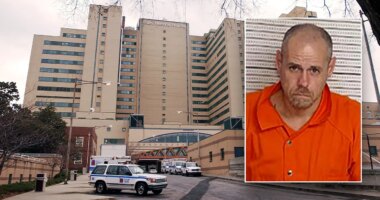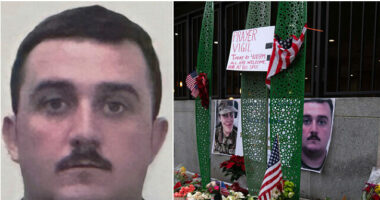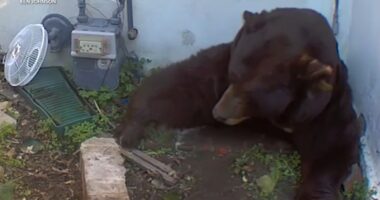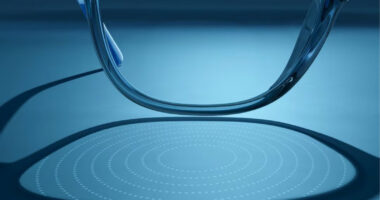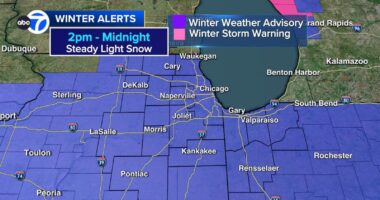Share this @internewscast.com
RADIOACTIVE soil from Fukushima will be used outside Japan’s government buildings in a bid to persuade the country that the dirt is safe.
Japan’s government revealed the bold move on Tuesday, explaining it aims to ease fears about reusing earth from the disaster zone in public projects.
Soil with low-level radioactivity is set to be utilized in flower beds and various sections on the premises of government buildings, such as the prime minister’s office.
This initiative represents the inaugural occasion where such soil is repurposed outside of Fukushima Prefecture, the area severely impacted by the most catastrophic nuclear disaster since Chernobyl.
Chief Cabinet Secretary Yoshimasa Hayashi said it’s “important to secure a wider public understanding” of the safety and utility of the soil.
But the move is controversial – previous attempts to use the soil in Tokyo and other parts of Japan were halted due to opposition.
Three nuclear reactors at the Fukushima plant suffered fuel meltdowns and hydrogen explosions in 2011 after an earthquake and tsunami.
Subsequently, a significant quantity of radioactive materials was discharged into the atmosphere, leading to the evacuation of over 150,000 residents from the neighboring regions.
Around 494 million cubic feet of removed soil and other radioactive waste is being temporarily stored near the nuclear plant.
The Japanese government is required by law to permanently dispose of the contaminated soil outside the prefecture by March 2045.
Soil with over 8,000 becquerels per kilogram of radioactive caesium cannot be used in any works, as per government guidelines.
But soil with low-level radioactivity is suitable for public works, the government claims.
The International Atomic Energy Agency (IAEA) conducted three expert missions to assess Japan’s safety request for using the soil – and after their review, approved the plans.
What happened at Fukushima?
On March 11, 2011, a major nuclear accident occurred at the Fukushima Daiichi Nuclear Power Plant in northern Japan.
It is considered the worst nuclear incident since the Chernobyl disaster in 1986.
The accident was triggered by a massive magnitude-9.0 earthquake off the coast of the Tōhoku region, followed by a powerful tsunami.
The tsunami disabled the plant’s cooling systems and the emergency backup generators.
All three active reactors automatically shut down during the earthquake, as designed.
But without power, cooling functions failed in the hours and days after.
As a result, the reactor cores overheated, leading to partial meltdowns and hydrogen explosions.
Significant amounts of radioactive material were released into the nearby environment, and radiation levels increased in food, water and the ocean.
The government was forced to declare a 18-mile evacuation zone and over 150,000 residents had to flee.
The long-term health effects of radiation exposure remain a topic of scientific debate.
In 2013, the World Health Organization reported that the disaster was unlikely to cause any measurable increase in overall cancer rates.
However, some studies suggest that young children exposed to radioactive iodine may face a slightly increased risk of thyroid cancer.
Fear remains: despite the lifting of evacuation orders in many areas, most residents have chosen not to return.
This comes as a rare glimpse inside Fukushima’s exclusion zone was revealed by an urban explorer last year.
Nuclear control rooms, hospitals and apartments are just some of the areas that remain abandoned and forgotten following the horrific event on March 11, 2011.
After watching a documentary on the Fukushima nuclear disaster Lukka Ventures, 27, from Manchester, decided to explore the ‘red zones’ – sites that have been closed off – around the plant.
Ventures visited abandoned hospitals, malls and apartments which he described as untouched by time.
Earlier that year, drone footage revealed the first glimpse inside ground zero of the hardest-hit Fukushima reactor.
The eerie video shows the melted wreckage alongside displaced control equipment, misshapen materials and blackened ladders.
Photos released by the plant’s operator are the first from inside the hardest-hit No. 1 reactor’s primary containment vessel – an area directly under the reactor’s core.
Officials had spent years trying to reach the area to examine the core and melted nuclear fuel.
Earlier attempts using robots were unsuccessful in reaching the area.









